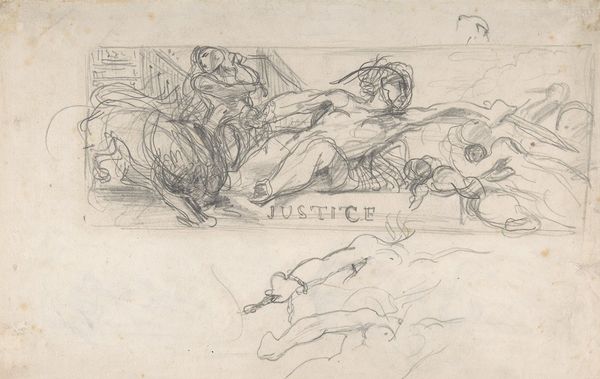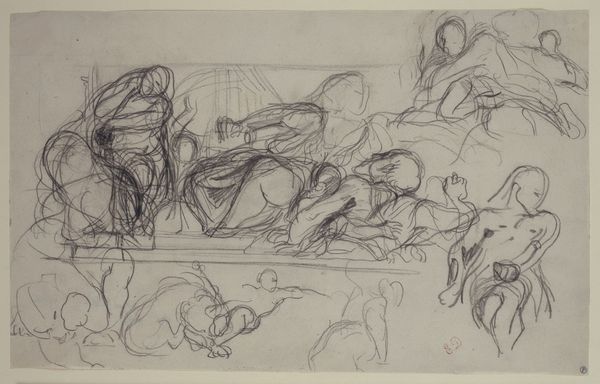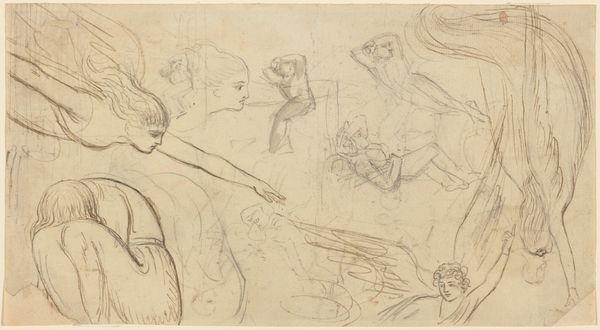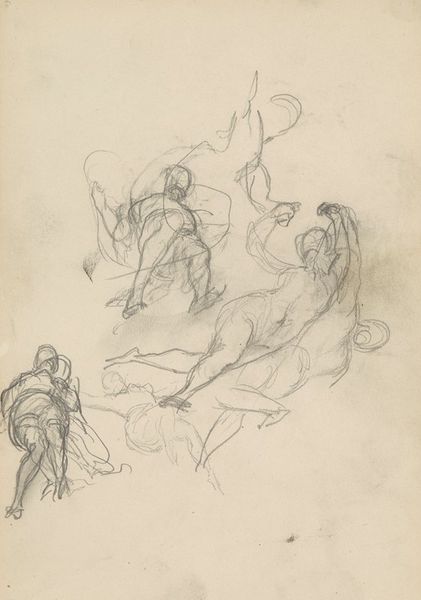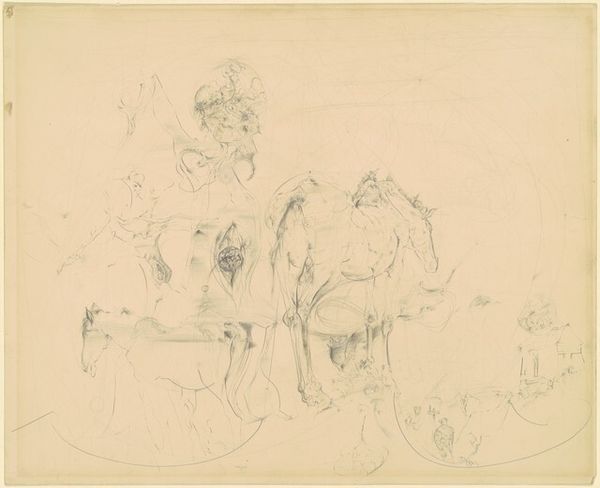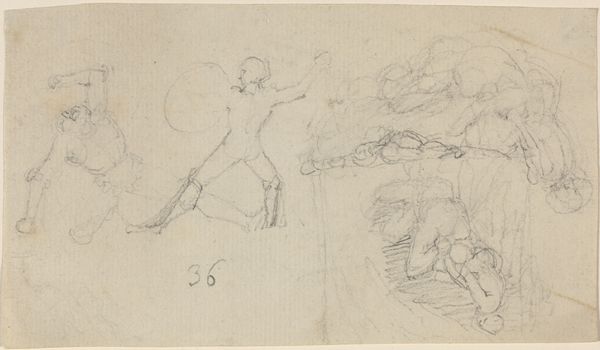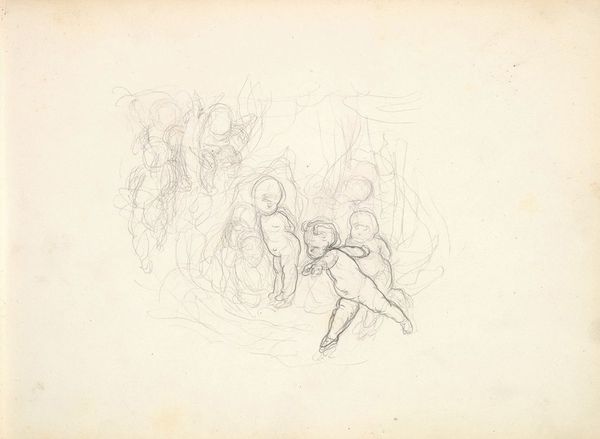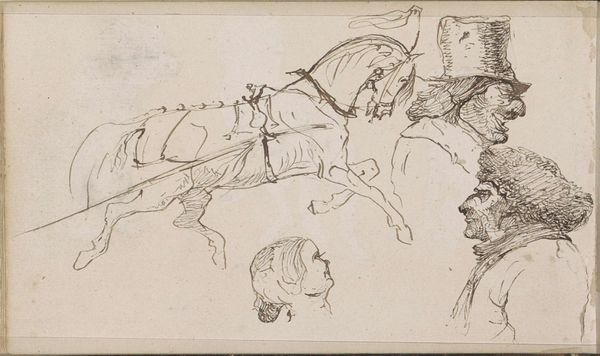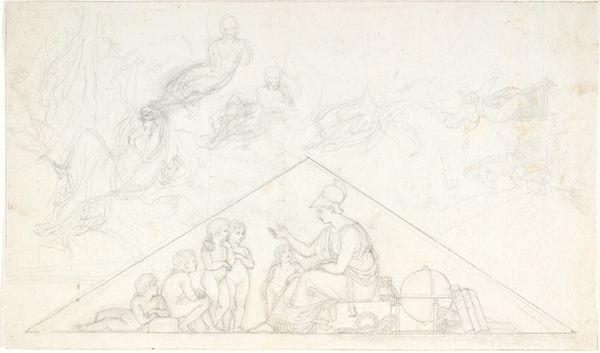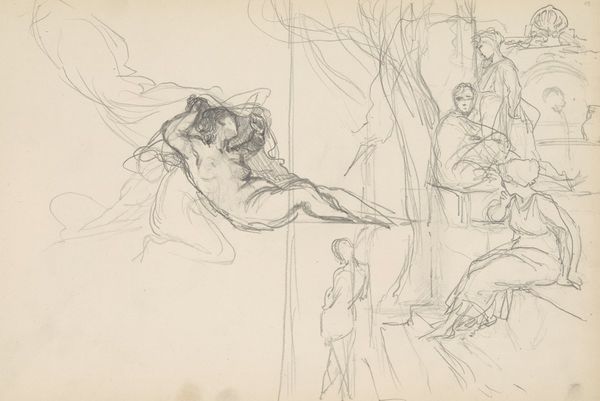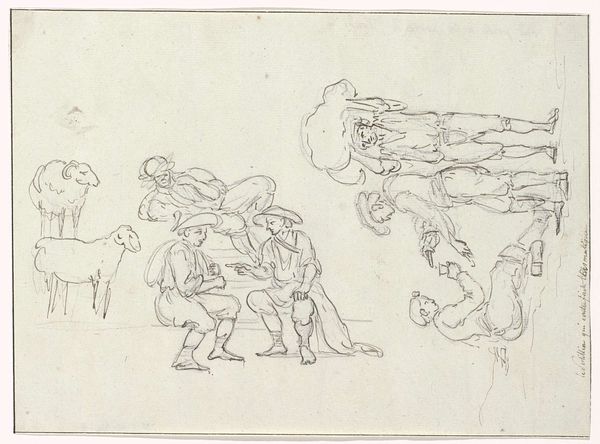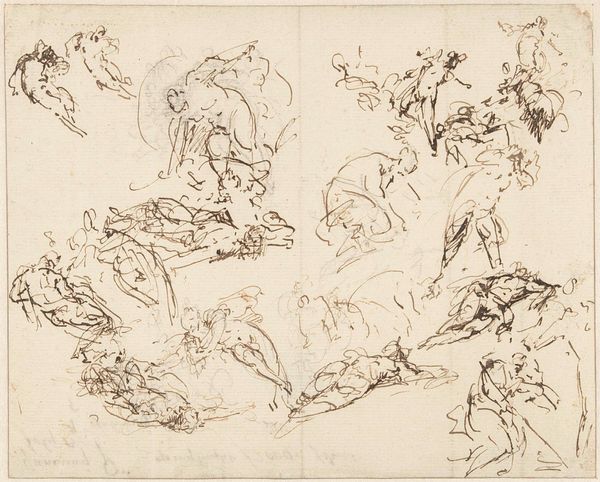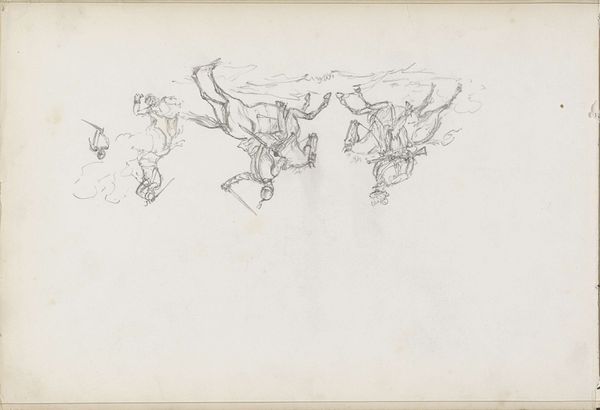
szkice do plafonu ‘Jutrzenka’ w pałacu J. Neczajewa-Malcewa w Petersburgu, m.in. rozwiązania całości malowidła, grupy postaci z Tyche powożącej rydwanem, Jutrzenki z pochodni 1883
0:00
0:00
drawing, pencil
#
drawing
#
pen sketch
#
figuration
#
pencil
#
history-painting
#
academic-art
Copyright: Public Domain: Artvee
Editor: This is a sketch by Henryk Siemiradzki from 1883, titled "Sketches for the 'Aurora' ceiling in the J. Neczajewa-Malcewa Palace in St. Petersburg." It's a pencil and pen drawing, and it feels very dynamic and preliminary, like the artist is working through a lot of ideas. What stands out to you when you look at this work? Curator: This sketch compels me to think about the commissioning process and the economic relationship between Siemiradzki and his patron. This wasn't simply a matter of artistic inspiration, but a commercial transaction where artistic labor was deployed to decorate a space, reinforcing the patron's status through symbolic representation. Notice the recurrent image of Aurora – her presence suggests a calculated attempt to associate the commissioner with ideas of renewal, perhaps even legitimizing newly acquired wealth and status. Editor: That's interesting. So you're saying it's less about the mythological content and more about what the artwork *does* for the person who commissioned it? Curator: Precisely. The "academic art" style wasn't simply a default artistic mode. It was a choice reflecting the aspirations and socio-political landscape within which this elite patron existed. We need to also consider the labour involved, right from the graphite mine to the artisan skilled in preparing drawing surfaces to understand the materiality informing this work. Does the paper choice suggest something about the relative ‘finish’ this sketch required, compared to other works produced by Siemiradzki at the time? Editor: I hadn't considered all those layers! I was so focused on the figures themselves. Now I see how much the material and economic aspects shaped even this preliminary sketch. Curator: Indeed, art isn't made in a vacuum, the social dynamics, the networks of patronage, and the materiality are integral to our understanding of these images. This close inspection pushes us to redefine not just art, but who and what constitutes ‘art’. Editor: It's amazing how focusing on materials and context changes the entire meaning of what I’m seeing. Thanks for pointing that out.
Comments
No comments
Be the first to comment and join the conversation on the ultimate creative platform.
